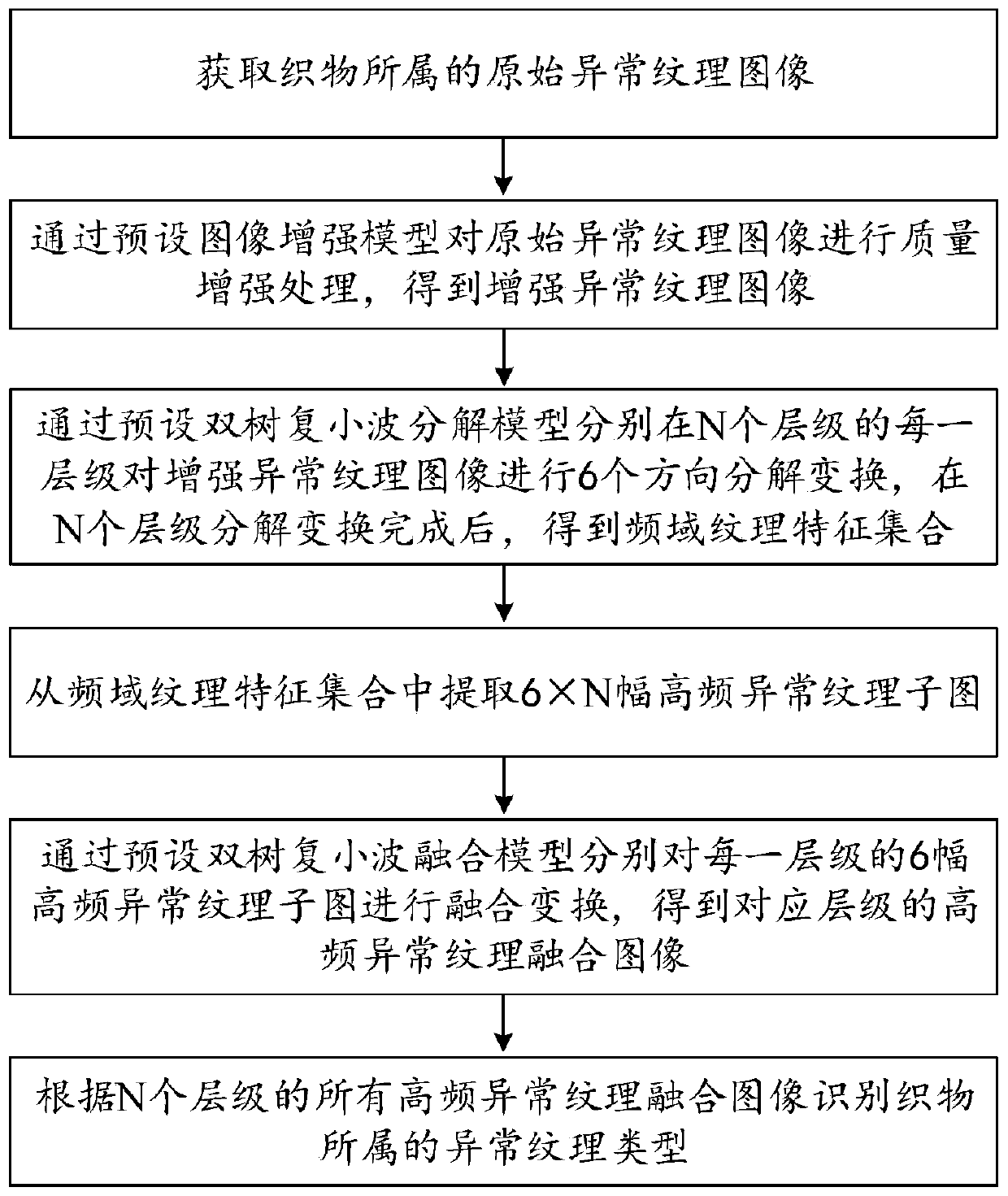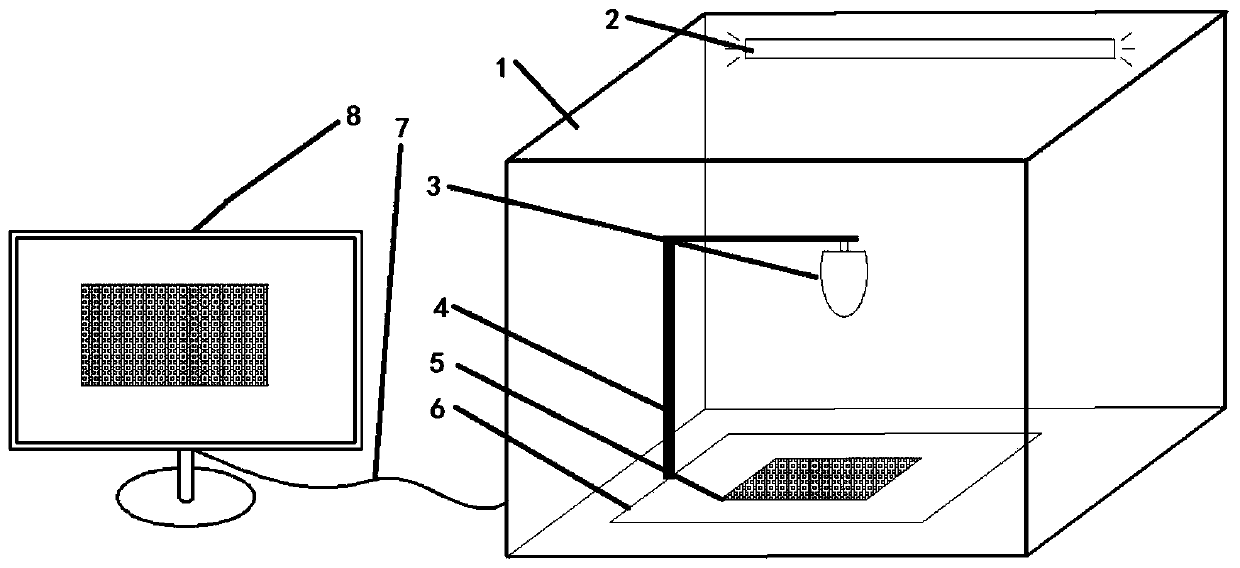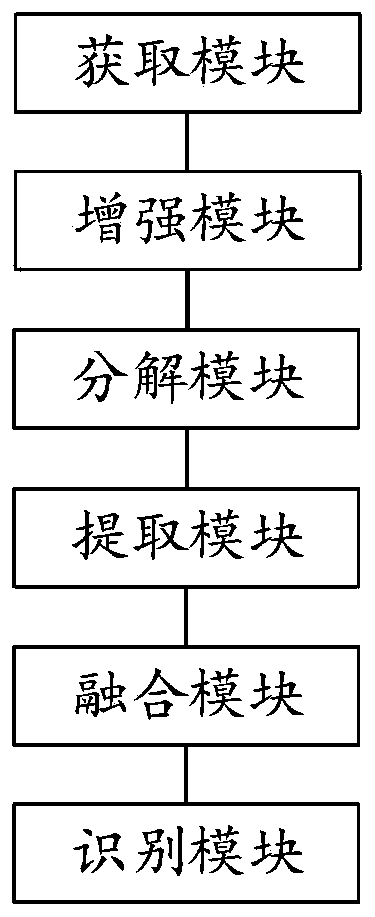Fabric abnormal texture type identification method and device
A type recognition and abnormal technology, applied in the direction of character and pattern recognition, image data processing, instruments, etc., can solve the problems of restricting the abnormal texture type of fabrics, etc., and achieve the effect of balancing recognition difficulty and recognition efficiency, enhancing clarity and efficient recognition
- Summary
- Abstract
- Description
- Claims
- Application Information
AI Technical Summary
Problems solved by technology
Method used
Image
Examples
Embodiment 1
[0029] Such as figure 1 As shown, a method for identifying abnormal texture types of fabrics includes:
[0030] Step 10: Obtain the original abnormal texture image to which the fabric belongs;
[0031] Step 20: Perform quality enhancement processing on the original abnormal texture image through a preset image enhancement model to obtain an enhanced abnormal texture image;
[0032] Step 30: Perform 6-direction decomposition transformation on the enhanced abnormal texture image at each of the N levels through the preset dual-tree complex wavelet decomposition model. After the N-level decomposition and transformation are completed, the frequency domain texture feature set is obtained. The domain texture feature set includes 2 low-frequency basic texture sub-images and 6×N high-frequency abnormal texture sub-images;
[0033] Step 40: Extract 6×N high-frequency abnormal texture sub-images from the frequency domain texture feature set;
[0034] Step 50: Perform fusion transformation on the ...
Embodiment 2
[0055] Such as figure 2 As shown, a device for identifying abnormal texture types of fabrics includes an acquisition module for acquiring the original abnormal texture image to which the fabric belongs; an enhancement module for enhancing the quality of the original abnormal texture image through a preset image enhancement model Abnormal texture image; decomposition module, used to decompose and transform the enhanced abnormal texture image in 6 directions at each of the N levels through the preset dual-tree complex wavelet decomposition model. After the N levels of decomposition and transformation are completed, the frequency is obtained Domain texture feature set; the extraction module is used to extract 6×N high-frequency abnormal texture sub-images from the frequency domain texture feature set; the fusion module is used to separately analyze the 6 of each level through the preset dual-tree complex wavelet fusion model The high-frequency abnormal texture sub-images are fused...
Embodiment 3
[0065] An intelligent device includes a memory and a processor coupled with the memory, the memory is configured to store a computer program, the processor is configured to load and execute the computer program, and the computer program is executed by the processor to realize the fabric described in the first embodiment. Any operation step performed by the abnormal texture type identification method.
[0066] The memory and the processor may be electrically connected to the communication control bus, so that the memory is coupled to the processor through the communication control bus, and smart devices such as mobile devices such as mobile phones or ipads or laptops or wearable devices.
PUM
 Login to View More
Login to View More Abstract
Description
Claims
Application Information
 Login to View More
Login to View More - R&D
- Intellectual Property
- Life Sciences
- Materials
- Tech Scout
- Unparalleled Data Quality
- Higher Quality Content
- 60% Fewer Hallucinations
Browse by: Latest US Patents, China's latest patents, Technical Efficacy Thesaurus, Application Domain, Technology Topic, Popular Technical Reports.
© 2025 PatSnap. All rights reserved.Legal|Privacy policy|Modern Slavery Act Transparency Statement|Sitemap|About US| Contact US: help@patsnap.com



